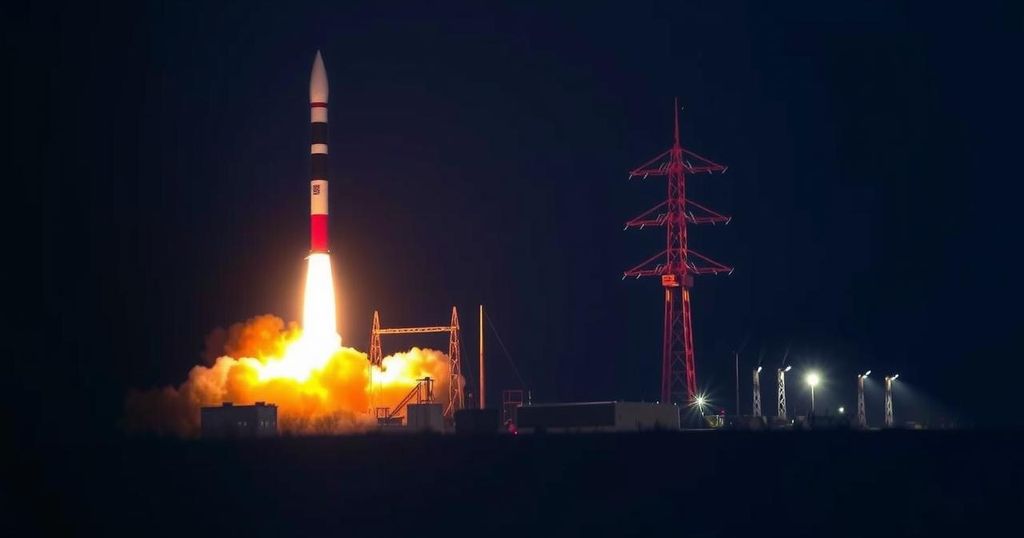North Korea Conducts New ICBM Test Amid Geopolitical Tensions and Military Alliances

North Korea has launched a new ICBM in its first missile test in nearly a year, designed to threaten the U.S. mainland. The launch, ordered by Kim Jong Un, coincides with increased tensions due to North Korean troops reportedly supporting Russian forces in the Ukraine conflict. The missile exhibited flight and altitude capabilities surpassing previous tests, highlighting North Korea’s advancements in missile technology and strategic military posturing.
North Korea has conducted a recent test of a new intercontinental ballistic missile (ICBM), marking its first missile launch in nearly a year. This test occurs in the context of heightened geopolitical tensions, particularly as it coincides with the upcoming United States elections. North Korean leader Kim Jong Un commanded the missile test and was present at the launch site. He described the action as a necessary show of military strength, aimed at responding to perceived threats from regional adversaries. The missile has been characterized by experts as potentially more agile than previous models, designed to target the U.S. mainland effectively. The United States, South Korea, and Japan have simultaneously condemned the launch, calling for a response to what they describe as a provocation that escalates regional instability. In addition to the missile test, concerns have arisen regarding North Korean troops allegedly donning Russian uniforms as they prepare to support Russian forces in Ukraine, intensifying worries about further military alliances in the region. Reports indicated that the missile reached a flight duration of 86 minutes and an altitude exceeding 4,350 miles. South Korean military officials noted that this test may have utilized a 12-axle launch vehicle, underscoring North Korea’s enhanced capabilities in missile deployment. Despite advancements in missile technology, foreign experts maintain that North Korea has yet to develop a reliable nuclear system capable of striking the U.S. mainland effectively. The complexities of atmospheric reentry technology remain a significant hurdle.
North Korea’s missile testing program has been a focal point of international concern, especially in relation to U.S. national security and regional stability in East Asia. Kim Jong Un’s regime has leveraged its missile development as a means of demonstrating military prowess and deterring perceived threats. Over the past few years, North Korea has significantly improved its missile technology, culminating in events such as the launch of the Hwasong-18 in December 2023. Moreover, the geopolitical landscape has shifted with Russia’s involvement in Ukraine, leading to speculations about military cooperation between North Korea and Russia, particularly concerning arms and troop movements. This latest missile test occurs amid these broader strategic considerations, further complicating the security dynamics in the region.
The recent launch of a new ICBM by North Korea illustrates the country’s ongoing commitment to enhancing its missile capabilities, particularly with a focus on reaching the U.S. mainland. The missile test, timed with the U.S. elections, signals a potential tightening of military postures in the region. North Korea’s actions, compounded by the possible involvement of North Korean troops in the Ukraine conflict, raise significant concerns among the international community regarding security and stability in East Asia. Continuous developments in North Korea’s missile technology and its strategic military alliances warrant close monitoring from global powers.
Original Source: www.cbsnews.com





